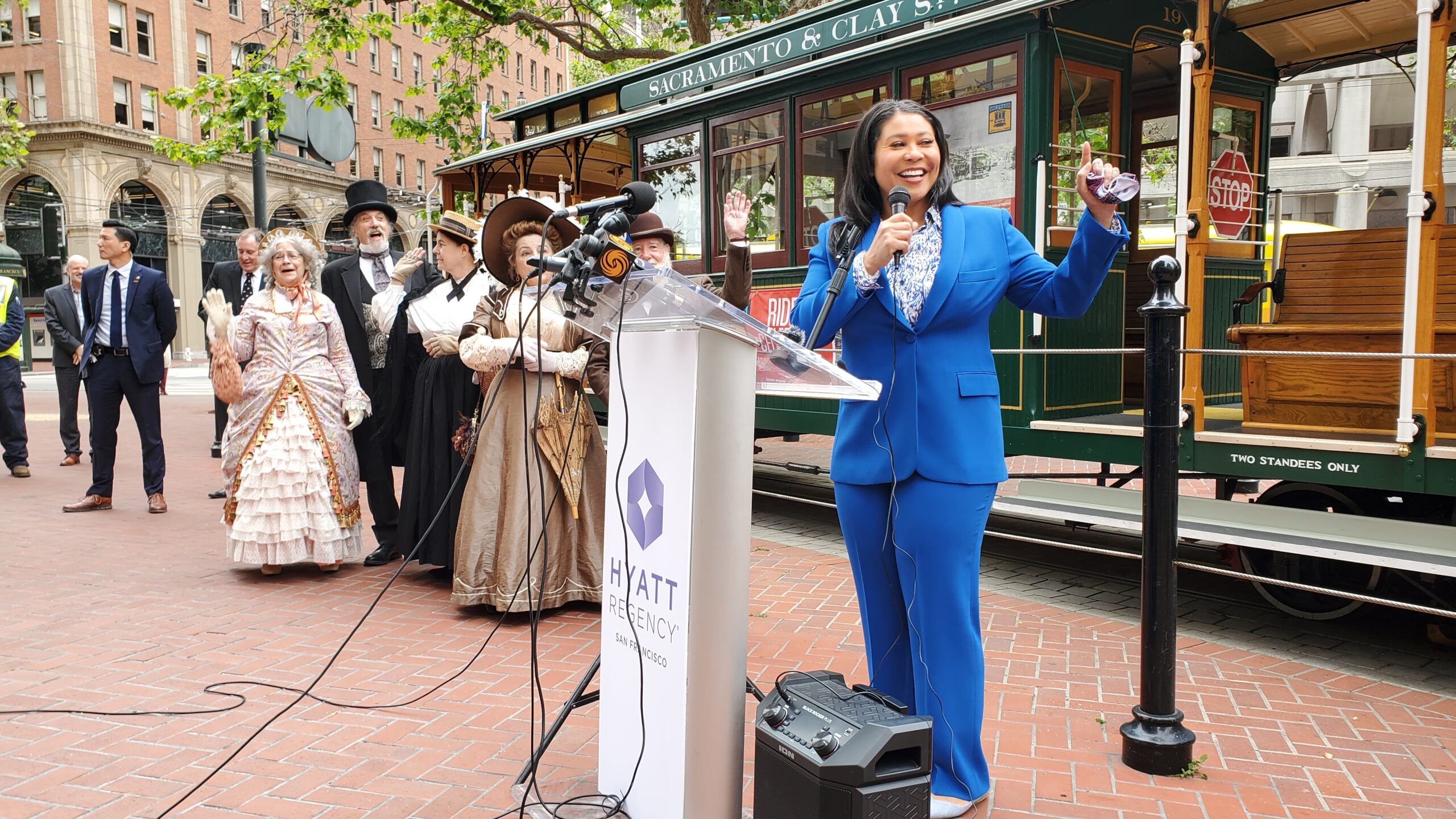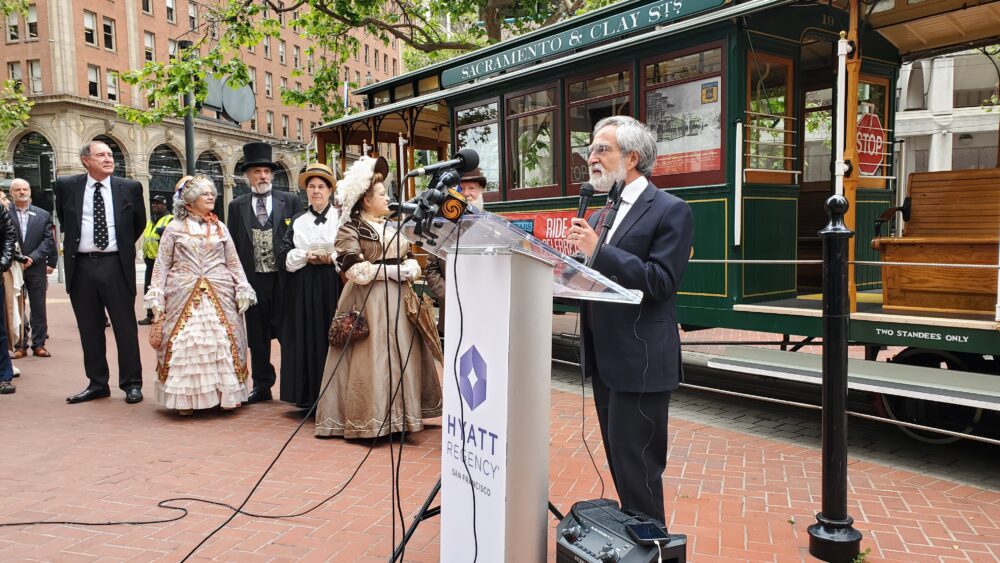San Francisco is celebrating the 150th anniversary of its famous cable cars over the next six months and the celebration kicked off Tuesday on the California Cable Car line with city leaders.
Mayor London Breed joined Board of Supervisors President Aaron Peskin and the city’s Director of Transportation Jeffrey Tumlin for a ride on the oldest cable car, “Big 19,” originally built in 1883 for service on Market Street. Now fully restored, visitors and residents can ride on Big 19 starting on Saturday through the end of October.

Breed said at a press conference before heading off on Big 19:
“Cable cars are one of the number one attractions in San Francisco, when they come to San Francisco to visit, they want to go to the Golden Gate Bridge, and they want to ride a cable car.”
Tweet this!
The public can also sign up for guided tours of the Cable Car Carpentry Shop, located in the Dogpatch neighborhood. The shop is where carpenters work on restoring and maintaining current cable cars in shape for service. Tours will take place on the first and third Fridays of each month through Nov. 3, with free tickets available through Eventbrite.
A film screening of the documentary “San Francisco Cable Cars” by Strephon Taylor will show on June 18 at the 4-Star Theatre with two showings, one at 4:30 p.m. and another showing at 7:30 p.m.
Inventor of the cable car, Andrew Hallidie, came back from the past to join the celebration.#SFMuni #CableCars pic.twitter.com/UVosDkbM9p
— Jerold Chinn 陳景深 (@Jerold_Chinn) June 13, 2023
Starting July 1 and through the end of the year, the San Francisco Municipal Transportation Agency will offer a $5 all-day pass that will allow passengers to hop on and off the California Cable Car line and explore neighborhoods like Chinatown and Nob Hill.

Peskin, who represents the many neighborhoods along the California Cable Car line, said:
“Yes, this is a tourist attraction, but it is also used by our local residents.”
Tweet this!
Andrew Hallidie, known for inventing the cable car system, patented the wire rope used to pull the cable cars underground to climb the city’s steep hills. The first run took place on Aug. 2, 1883.

Tumlin said during the Gold Rush, people like Levi Strauss and Hallidie were not after the gold, but made money through inventions like blue jeans and the wired rope:
“Andrew Hallidie and his father came to San Francisco during the Gold Rush and did not make money off of gold, but did figure out how to make wire rope, which he sold to gold miners all over the state and then thought, what if I took this wire rope crazy technology and combined it with some weird newfangled technology for hauling ore out of the ground and turn it into a technology for reinventing real estate in San Francisco by hauling people up the highest hills.”
Tweet this!
The mayor also mentioned Friedel Klussman, who created the Citizens’ Committee to Save the Cable Cars in 1947 when then-Mayor Roger Lapham sought to get rid of the cable cars. Klussman rallied women to fight against the mayor’s plan. Klussman’s committee was able to put Measure 10 on the ballot in 1947 to save the cable cars and voters passed it. The city dedicated the Hyde Street cable car turnaround in Klussman’s honor in 1997.
Breed said:
“While others decided to forego their cable cars, San Francisco decided to double down. In 1947, we had this extraordinary woman, Friedel Klussmann, who said ‘no, Mr. Mayor, we are not going to give up our cable cars. In fact, I’m gonna rally all the women of San Francisco we’re gonna put it on the ballot and we’re gonna say the cable cars of San Francisco’ and save the cable car and she did.”
Tweet this!
A full list of events and history of cable cars in San Francisco can be found at https://www.sfcablecars.org/.
Jerold serves as a reporter and San Francisco Bureau Chief for SFBay covering transportation and occasionally City Hall and the Mayor's Office in San Francisco. His work on transportation has been recognized by the San Francisco Press Club. Born and raised in San Francisco, he graduated from San Francisco State University with a degree in journalism. Jerold previously wrote for the San Francisco Public Press, a nonprofit, noncommercial news organization. When not reporting, you can find Jerold taking Muni to check out new places to eat in the city.
